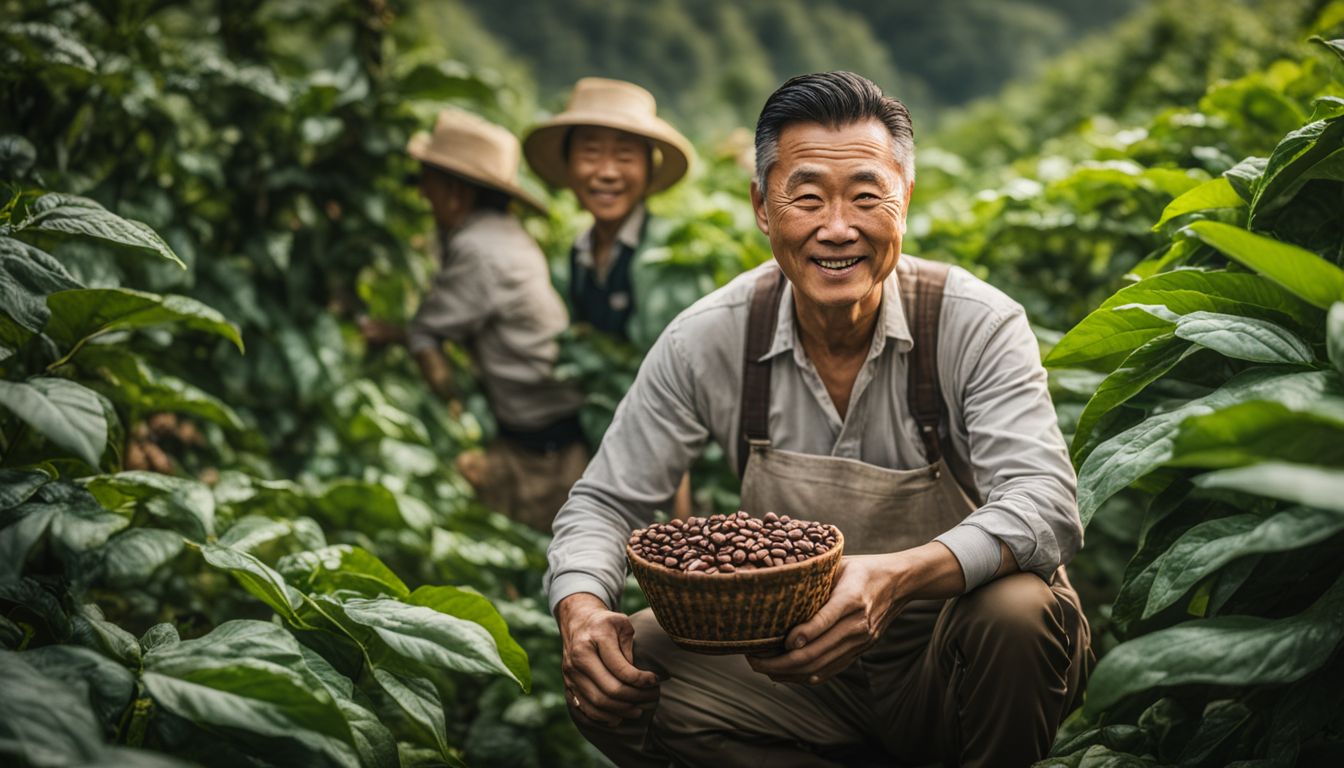Blog
Arabica Coffee vs Robusta: The Ultimate Comparison
Arabica coffee and Robusta coffee dominate the global coffee market, but what sets them apart? You’ve probably seen signs boasting 100% Arabica coffee, but does that make it superior? Let’s jump into the key differences between these two popular coffee species.
In this text, you’ll explore:
- Growth conditions: Arabica thrives at higher altitudes, while Robusta flourishes at lower elevations.
- Caffeine content: Robusta beans contain nearly twice as much caffeine as Arabica beans.
- Plant characteristics: Robusta plants are larger and more disease-resistant compared to Arabica.
Overview of Arabica and Robusta Coffee
- Arabica Coffee Beans: Originated in Ethiopia. Higher elevations favour their growth. Offer a smoother, sweeter taste.
- Robusta Coffee Beans: Originated in West Africa. Thrive at lower elevations. Provide a stronger, more bitter flavour.
- Arabica Plants: More challenging to cultivate, sensitive to pests. Represent around 60% of global coffee production.
- Robusta Plants: Easier to grow, more resistant to diseases. Constitute approximately 40% of the world’s coffee production.
- Taste: Arabica coffee has a milder flavour with increased sweetness and acidity. Robusta coffee is bolder with a higher caffeine content, contributing to its bitterness.
- Arabica Coffee: Prefers high-altitude subtropical climates. Requires consistent rainfall and well-drained, fertile soil. Grows best in temperatures between 15-24°C.
- Robusta Coffee: Thrives in low-altitude equatorial climates. Adapts to warmer temperatures from 24-30°C. More tolerant of varying rainfall patterns and poorer soil quality.
Both arabica and robusta coffee beans play significant roles in the coffee industry. Arabica beans are typically used for specialty coffee, while robusta beans are common in instant coffee and espresso blends.
Understanding these core differences enhances your appreciation of each coffee bean type and helps you choose the best coffee for your taste and lifestyle.
Comparative Analysis of Arabica and Robusta
Arabica and Robusta coffee beans differ greatly in several attributes.
Arabica beans
- Shape: Oval, with a curved center crease.
- Plant height: Arabica plants grow up to 15 feet tall but are often pruned to about 6 feet.
- Yield: Generally lower yield than Robusta.
Robusta beans
- Shape: Round, with a straight center crease.
- Plant height: Robusta plants grow up to 20 feet tall.
- Yield: Higher yield than Arabica.
Flavour Profiles
The flavour profiles of Arabica and Robusta coffee beans offer distinct experiences.
Arabica coffee beans
- Flavour: Sweet, with notes of fruit and berries.
- Acidity: Higher, providing a complex, well-balanced taste.
- Lipid and sugar content: Almost 60% more lipids and nearly twice the sugar compared to Robusta, contributing to its smoother taste.
Robusta coffee beans
- Flavour: Strong, with earthy, woody, or even rubbery notes.
- Acidity: Lower, leading to a more robust and bitter taste.
- Lipid and sugar content: Lower, making the flavour less refined.
Caffeine Content and Health Impact
Arabica and Robusta beans vary in their caffeine content and associated health impacts.
- Caffeine content in Arabica beans: Approximately 1.5% caffeine. Lower caffeine content makes it suitable for those sensitive to caffeine.
- Caffeine content in Robusta beans: About 2.7% caffeine. Higher caffeine content provides a strong, bitter taste, suitable for those needing a potent coffee boost.
Health Impact:
- Arabica: Lower caffeine content results in fewer side effects like headaches or insomnia.
- Robusta: Higher caffeine content can lead to adverse effects if consumed in large quantities.
Understanding these differences helps you decide which coffee aligns with your taste preferences and caffeine tolerance.
Cultivation Practices
Arabica Coffee Cultivation
Arabica coffee plants thrive at high altitudes in tropical regions, particularly in places like Ethiopia, Brazil, and Colombia.
- Altitude Requirements: Arabica coffee plants grow best at elevations between 600 and 2,000 metres.
- Climate: They thrive in climates with consistent temperatures of 15-24°C.
- Soil: Rich, well-drained volcanic soils favour the growth of arabica plants.
- Shade Need: Arabica plants often require shade, hence farmers interplant them with shade trees.
- Harvesting: Hand-picking is common, ensuring selection of quality coffee beans.
Robusta Coffee Cultivation
Robusta coffee plants are hardier and can flourish in diverse conditions, often in lower altitudes compared to arabica.
- Altitude Requirements: Robusta plants grow well at elevations below 600 metres.
- Climate: These plants prefer warmer climates with temperatures ranging from 24-30°C.
- Soil: They can grow in a variety of soils but perform best in nutrient-rich, well-drained soils.
- Shade Need: Robusta plants can tolerate direct sunlight, reducing the need for shade.
- Harvesting: Machine harvesting is common due to the sturdy nature of robusta beans, which can handle mechanized processing.
By understanding these cultivation differences between arabica coffee and robusta coffee plants, you can appreciate the diverse growing conditions and techniques that impact the flavour and quality of your favourite coffee.
Economic and Environmental Impact
Arabica coffee beans dominate the global coffee market, accounting for around 60-70% of production. The higher demand for Arabica beans results in increased prices.
Their flavour profile, characterised by sweetness and acidity, appeals to specialty coffee enthusiasts. In contrast, Robusta beans are cheaper due to their robust growth and higher yield.
Their higher caffeine content makes them suitable for instant coffee and espresso blends. You might notice price differences in your local shop, with Arabica beans typically costing more than Robusta.
Sustainability and Farming Practices
Arabica plants are delicate, requiring specific climate conditions, higher altitudes, and richer soil. These features contribute to sustainable farming challenges due to climate change and deforestation in tropical regions like Brazil, Colombia, and Ethiopia.
Conversely, Robusta plants are hardier, thriving at lower altitudes and in warmer climates, making them easier to cultivate in regions like Vietnam, India, and West Africa.
Key Points:
- Arabica cultivation: Requires higher altitudes (1300-1500m), specific climates, and richer soils.
- Robusta cultivation: Grows at lower altitudes (900-1000m), in diverse and warmer conditions.
- Sustainability: Arabica farming faces climate and environmental challenges, while Robusta’s hardiness aids in sustainable practices.
Understanding these economic and environmental impacts helps you make informed decisions about your coffee preferences and support responsible farming practices.
Conclusion
Choosing between Arabica and Robusta eventually comes down to your personal taste and priorities. If you prefer a sweeter, more nuanced flavour, Arabica’s your go to. For a stronger kick and a more budget-friendly option, Robusta’s has all the answers.
Consider the environmental and economic impacts too. Opting for Arabica supports a market that values quality but faces sustainability challenges. On the other hand, Robusta’s hardiness makes it a more sustainable choice.
Next time you sip your coffee, think about the journey those beans took to reach your cup. Making informed choices can help support responsible farming and a better coffee future.



